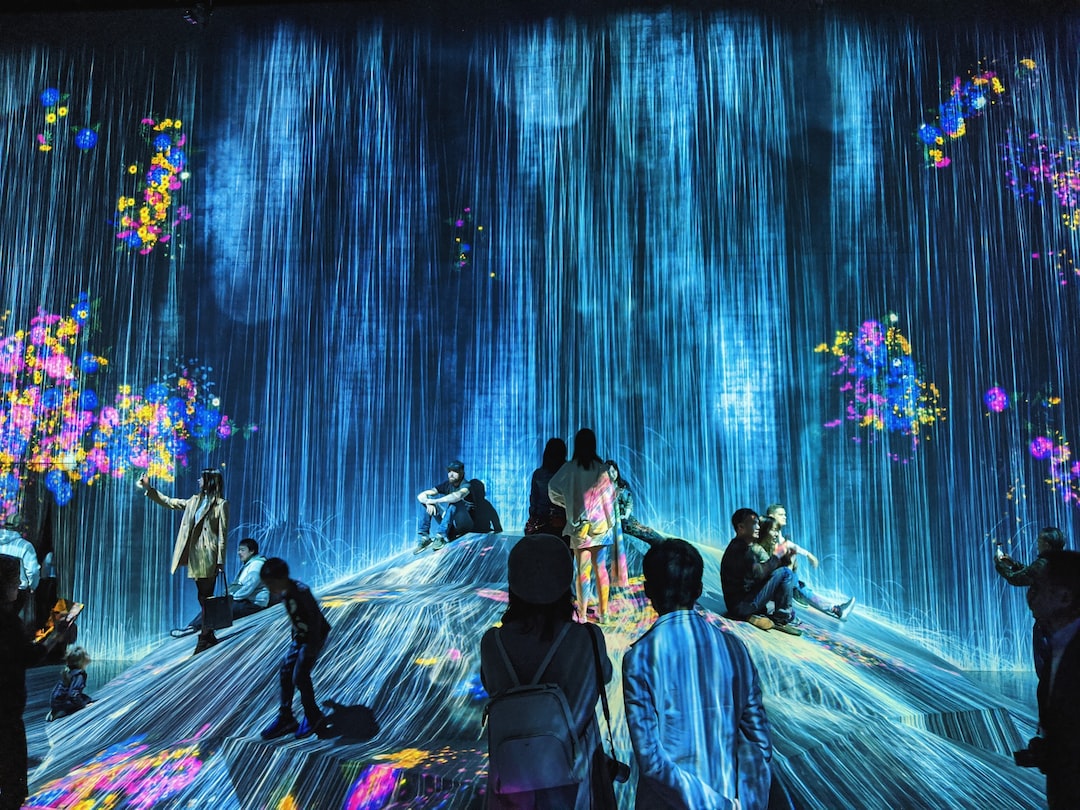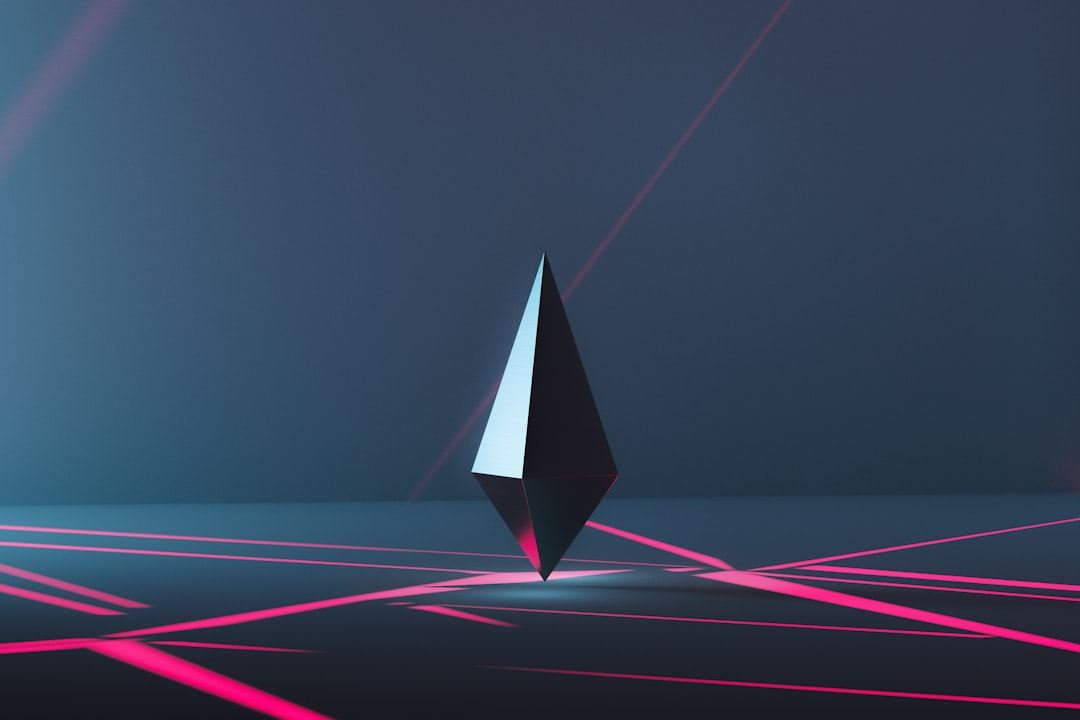The world of art is rapidly changing, and one of the latest developments to hit the scene is the rise of non-fungible tokens, or NFTs. In the past year, NFTs have gone from being a relatively unknown concept to becoming one of the hottest trends in the art world. But what exactly are NFTs, and how are they changing the way art is bought, sold, and collected?
If you’re not familiar with NFTs, don’t worry – you’re not alone. Despite their growing popularity, many people are still unsure about what NFTs are and how they work. Essentially, NFTs are a type of digital asset that allows artists to sell their work as unique, one-of-a-kind pieces that cannot be replicated or duplicated. This is made possible through the use of blockchain technology, which creates a digital ledger that records ownership and transaction details.
So why are NFTs such a big deal in the art world? For one, they offer a way for artists to monetize their digital creations in a way that was previously impossible. With NFTs, artists can sell their work directly to collectors, without the need for intermediaries like galleries or auction houses. This not only gives artists more control over their work, but also allows them to earn a fairer share of the profits.
At the same time, NFTs are also changing the way collectors think about art ownership. Traditionally, owning a piece of art meant having a physical object that could be displayed or stored. But with NFTs, ownership is based on a digital token that is stored on a blockchain. This means that collectors can own digital art in the same way that they own physical art – and in some cases, even more securely.
Of course, as with any new development in the art world, NFTs are not without controversy. Some critics argue that they are contributing to the commodification of art, while others worry about the environmental impact of blockchain technology. However, there is no denying that NFTs are having a major impact on the art world – and that they are here to stay.
In the following sections, we’ll dive deeper into the world of NFTs, exploring their benefits for both artists and collectors, as well as some of the controversies surrounding them. We’ll also look at how NFTs are changing the way we think about art sales and ownership, and what this could mean for the future of the art market. So grab a cup of coffee and let’s explore the exciting world of NFTs!
What are NFTs and How Do They Work?
NFTs, or non-fungible tokens, are digital assets that represent ownership or proof of authenticity of a specific piece of art or other unique item. They are a type of cryptocurrency that uses blockchain technology to create a unique and verifiable record of ownership that cannot be duplicated or forged.
To understand how NFTs work, it’s important to understand a bit about blockchain technology. When you create an NFT, you essentially create a unique digital code that is stored on a blockchain, which is a decentralized digital ledger that records transactions in a secure and transparent way.
This code contains information about the specific piece of art the NFT represents, including its title, artist, description, and other relevant information. It also creates a record of ownership that is stored on the blockchain, which allows for easy verification of authenticity and ownership.
When an NFT is sold, the transaction is recorded on the blockchain and the ownership record is transferred from the seller to the buyer. This creates a clear and verifiable record of ownership that cannot be disputed or duplicated.
Overall, NFTs represent a new and exciting way for artists and collectors to buy and sell unique pieces of art in a secure and transparent way. While there are some controversies surrounding NFTs in the art world, many experts believe that they have the potential to revolutionize the way we think about art ownership and sales.
It also creates a record of ownership that is stored on the blockchain, which allows for easy verification of authenticity and ownership.
The Benefits of NFTs for Artists and Collectors
NFTs have been a game-changer for both artists and collectors in the art world. The benefits of NFTs are numerous and have generated a lot of excitement and buzz.
One of the major advantages of NFTs for artists is the ability to protect their digital works of art. Digital art has always been easy to copy and distribute, which makes it challenging for artists to sell their work and make a living. With NFTs, artists can now authenticate their digital art and prove ownership, which makes it valuable and collectible.
Another benefit of NFTs for artists is the ability to earn royalties every time their work is sold or traded. This means that artists can earn money even after they have sold their artwork. It provides a steady stream of income that can help artists to sustain their careers.
For collectors, NFTs have opened up a whole new world of collectibles. Collectors can now own unique and rare pieces of digital art that are authenticated and verified on the blockchain. It also provides a level of transparency and trust in the art market that hasn’t existed before.
NFTs also offer collectors the ability to easily trade and sell their collectibles. With traditional art, it can be challenging and expensive to sell a piece of artwork. NFTs, on the other hand, can be easily sold and traded on various platforms, which opens up a whole new world of possibilities for collectors.
Overall, NFTs have revolutionized the art world by providing a secure and transparent platform for artists and collectors to buy, sell, and trade digital art. It offers a new level of authenticity and democratization that has never existed before. The possibilities for the future of NFTs in the art world are endless, and we can’t wait to see what will happen next.
With NFTs, artists can now authenticate their digital art and prove ownership, which makes it valuable and collectible.
The Controversies of NFTs in the Art World
As with any new technology or innovation, there are bound to be controversies and debates surrounding its use and impact. NFTs in the art world are no exception. While some see them as a revolutionary tool for artists and collectors, others are more skeptical and critical of their potential drawbacks.
One of the main criticisms of NFTs in the art world is their environmental impact. The energy consumption required to mint and trade NFTs has been a cause for concern, especially given the current climate crisis. Some argue that the carbon footprint of NFTs could outweigh any potential benefits they offer.
Another controversy surrounding NFTs is their exclusivity and elitism. Some argue that NFTs reinforce existing power structures in the art world, favoring established artists and collectors with the resources to participate in the market. This could potentially limit the diversity and inclusivity of the art world, hindering the discovery and promotion of emerging artists and voices.
There are also concerns about the authenticity and ownership of NFTs. While they are touted as a secure and transparent way to verify ownership of digital art, there have been instances of fraud and disputes over the true ownership of NFTs. This could potentially undermine the value and trust in the NFT market.
Despite these controversies, it is important to approach NFTs in the art world with an open mind and a willingness to engage in dialogue and critique. As with any new technology or innovation, there are both potential benefits and drawbacks. It is up to us as artists, collectors, and enthusiasts to carefully consider the implications of NFTs and how they can best serve the art world in a responsible and sustainable manner.
While they are touted as a secure and transparent way to verify ownership of digital art, there have been instances of fraud and disputes over the true ownership of NFTs.
NFTs and the Future of Art Sales and Ownership
The art world has been around for centuries, and it has evolved in many ways over time. From the classical art of the Renaissance to the contemporary art of today, the art world has always been a place where creativity, talent, and beauty are celebrated. However, with the advent of NFTs, the art world is experiencing a significant shift in how art is sold and owned.
NFTs have the potential to revolutionize the way we buy and sell art. In the past, art ownership has been limited to those who have the resources to afford it. Galleries, auction houses, and private collectors have traditionally dominated the art market, making it difficult for up-and-coming artists to break into the industry.
However, NFTs have the potential to democratize the art market. With the use of blockchain technology, artists can sell their work directly to their fans and collectors. This means that artists can potentially earn more money and have more control over their work.
Additionally, NFTs can provide a new level of transparency in the art world. With blockchain technology, buyers can be sure that the artwork they are buying is authentic and has not been tampered with. This can help to eliminate the issues of fraud and forgery that have plagued the art market for centuries.
Furthermore, NFTs can offer a new level of flexibility in art ownership. With traditional art ownership, once a piece is sold, it is generally out of the artist’s control. However, with NFTs, artists can set rules and conditions for how their work can be displayed or resold. This can help to ensure that artists receive proper credit and compensation for their work, even after it has been sold.
NFTs have the potential to shake up the art world in ways we never thought possible. By providing a new level of transparency, flexibility, and democratization, NFTs can help to create a more equitable and accessible art market for artists and collectors alike. As we move forward, it will be interesting to see how NFTs continue to shape and influence the art world.
This can help to ensure that artists receive proper credit and compensation for their work, even after it has been sold.
NFTs and the Democratization of the Art Market
One of the most exciting aspects of the rise of NFTs in the art world is the potential for democratization. For years, the art market has been dominated by a small group of wealthy collectors and institutions, making it difficult for emerging artists to break through and for everyday people to access and afford original artwork. NFTs have the potential to change all of that.
First of all, NFTs allow artists to sell their work directly to collectors without the need for intermediaries like galleries or auction houses. This means that artists can earn more money from their work, and that collectors can purchase artwork at a lower price point than they would through traditional channels. Additionally, through the use of smart contracts, artists can receive a percentage of the profits every time their work is resold, creating a more sustainable and equitable system for artists.
Furthermore, the technology behind NFTs allows for fractional ownership, meaning that multiple people can own a piece of artwork rather than just one wealthy collector. This opens up the art market to a much larger pool of potential buyers and investors, making it possible for more people to participate in the art world and support emerging artists.
Finally, NFTs allow for a much wider range of artists and styles to be represented in the art market. Traditionally, galleries and auction houses have favored certain types of artwork and artists, often based on their commercial appeal or reputation. With NFTs, however, anyone can create and sell their artwork, regardless of their background or connections in the art world. This means that we may see a much more diverse and inclusive art market in the future.
Of course, there are still challenges to be addressed when it comes to the democratization of the art market through NFTs. For example, not everyone has access to the technology and resources needed to create and sell NFTs, and there are concerns about the environmental impact of the blockchain technology used to create them. However, the potential for NFTs to make the art world more accessible and equitable is undeniable, and it will be exciting to see how this technology continues to evolve in the coming years.
NFTs have the potential to change all of that.
Conclusion: The Rise of NFTs and What It Means for the Art World
As we come to the end of this discussion on NFTs and their impact on the art world, it’s hard not to feel a sense of awe and wonder at the possibilities that these digital assets offer. From buying and selling art to owning a piece of history, NFTs have opened up a whole new world of opportunities for artists, collectors, and enthusiasts alike.
While there have been some controversies surrounding NFTs in the art world, it’s important to recognize that this is all part of the process of innovation and experimentation. As with any emerging technology, there will always be skeptics and detractors, but we should not let that hold us back from exploring the potential of NFTs.
One of the most exciting aspects of NFTs is their potential to democratize the art market. By allowing anyone to own a piece of digital art, regardless of their wealth and status, NFTs are breaking down barriers and giving artists a new platform to showcase their work. This could lead to a more diverse and inclusive art world, where creativity and talent are valued above all else.
As we look to the future, it’s clear that NFTs will continue to play a major role in shaping the art world. Whether you are an artist, collector, or simply someone who appreciates art, there has never been a better time to get involved in this exciting and rapidly evolving space.
So, let’s embrace the rise of NFTs and all that they have to offer. Let’s continue to explore new possibilities, push boundaries, and celebrate the incredible creativity of artists from all around the world. The future is bright, and the possibilities are endless.





